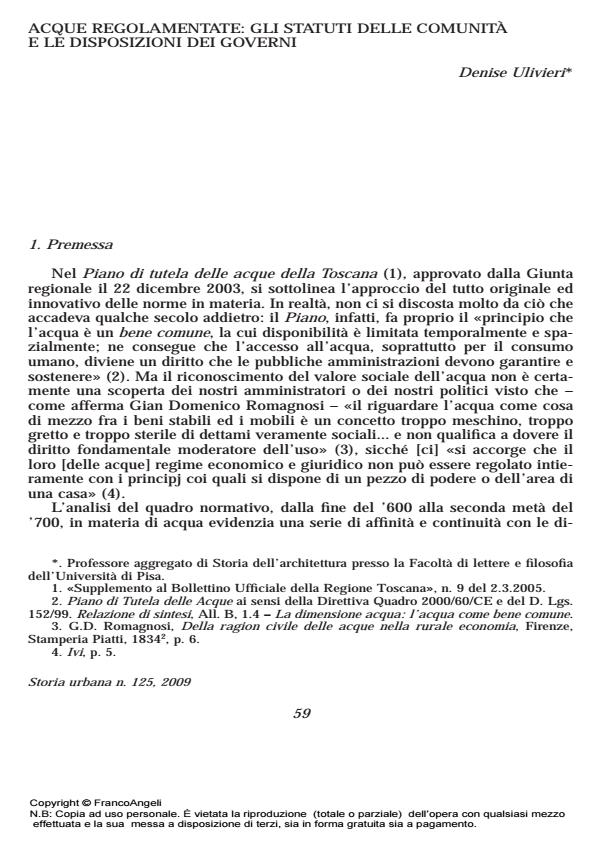Acque regolamentate: gli statuti delle comunità e le disposizioni dei governi
Journal title STORIA URBANA
Author/s Denise Ulivieri
Publishing Year 2010 Issue 2009/125
Language Italian Pages 21 P. 59-79 File size 718 KB
DOI 10.3280/SU2009-125004
DOI is like a bar code for intellectual property: to have more infomation
click here
Below, you can see the article first page
If you want to buy this article in PDF format, you can do it, following the instructions to buy download credits

FrancoAngeli is member of Publishers International Linking Association, Inc (PILA), a not-for-profit association which run the CrossRef service enabling links to and from online scholarly content.
Water legislation. Community statutes and governmental regulations Water - Tuscany Legislation Local Communities Water was a precious commodity in 16th and 17th centuries Tuscany and the authorities were responsible for its safeguard. Ditches, canals and waterfalls were as much a production factor as working the soil, the iron, coal and silver mines and the communities learnt to increasingly and efficiently exploit hydraulic power. The local communities were committed to improving the water systems in order to avoid water pollution and the collapse of the river banks and embankments. During the 18th century they experimented the different "more secure ways of repairing structural damages caused by the contact with water". The reviews and analyses of the water regulations, from the end of the 16th century to the first decades of the 17th century, highlight a series of similarities and continuity with the community statutes with regard to rules and regulations in general. From the second half of the 18th century, Grand Duke Peter Leopold’s reforms heavily influenced the management of the Tuscan water network.
Denise Ulivieri, Acque regolamentate: gli statuti delle comunità e le disposizioni dei governi in "STORIA URBANA " 125/2009, pp 59-79, DOI: 10.3280/SU2009-125004